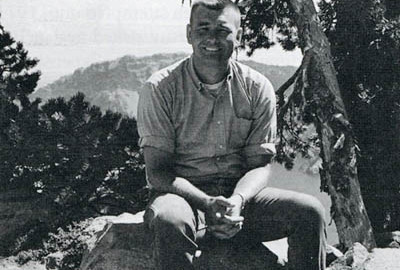That fall, 1963, I drove up to the University of North Dakota and asked the biology department if I could enroll. In those days they were building their departments because science was being heavily funded (1). Graduate schools were open to anyone who had a bachelors degree. They had money, and opportunities to do research. I received a teaching assistantship and started working. My thesis research was on salamanders in North Dakota, emphasizing the physiology and ecology of one particular species. My research confirmed what some people had believed for a long time, that the subspecies are distributed in accordance with a moisture gradient across the state from east to west. The eastern part of North Dakota in the Red River Valley, for example probably receives 10 inches more rain than the Badlands in the western part. I was quite interested in my masters thesis research, but after I received my masters, the question was “where do I go from here?” I was married, my wife was a teacher, and so I decided maybe I could pursue a Ph.D. Much of my coursework was in genetics, evolution, speciation, and those kinds of things, but things were starting to tighten by 1965. Funds weren’t as readily available as they had been because of the Vietnam War.
Things were tightening up and my major advisor talked about a Ph.D. program at the University of New Mexico but I really didn’t want to go there. I had a friend who was working on Devils Lake in North Dakota. That’s where he did his masters on phytoplankton primary production and nitrogen cycling. Anyway, he said the University of North Dakota had just received an Office of Water Resources research grant to study Devils Lake since it was part of the Garrison diversion project, and they didn’t have anyone to work on chironomids. The chironomids, midges, look like little mosquitoes, but they’re biting insects. He said we would like someone to come on board now that they had grant money. It meant that I would be on a research assistantship, rather than teach. The job would last for three or four years, and I was to receive a little stipend and a tuition waiver. That was a great opportunity, so starting in the fall of 1965, I began working on Devils Lake studying the chironomids.


